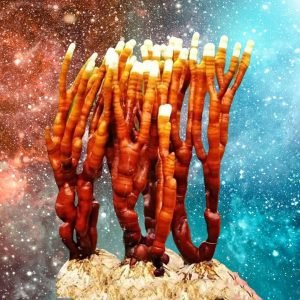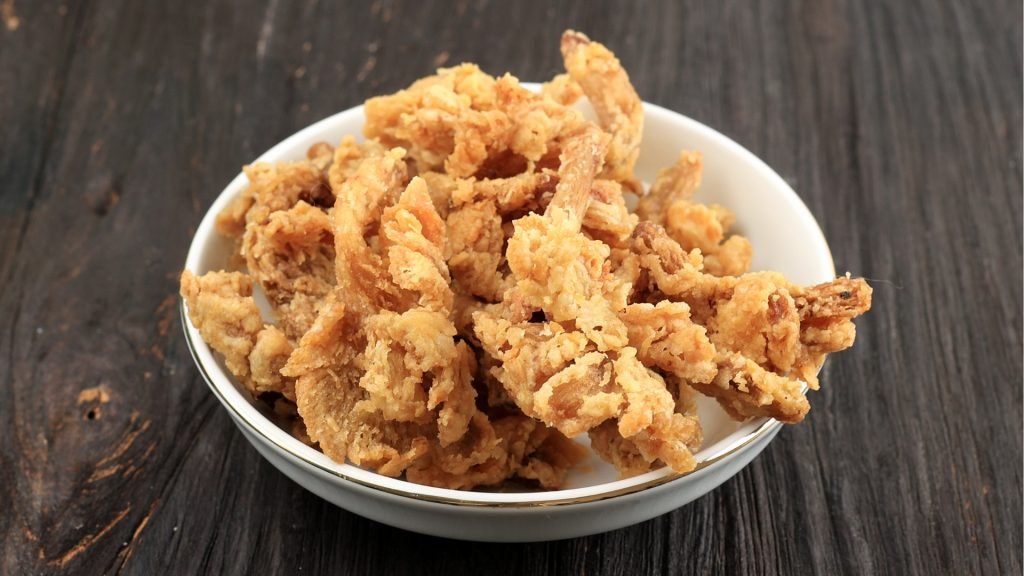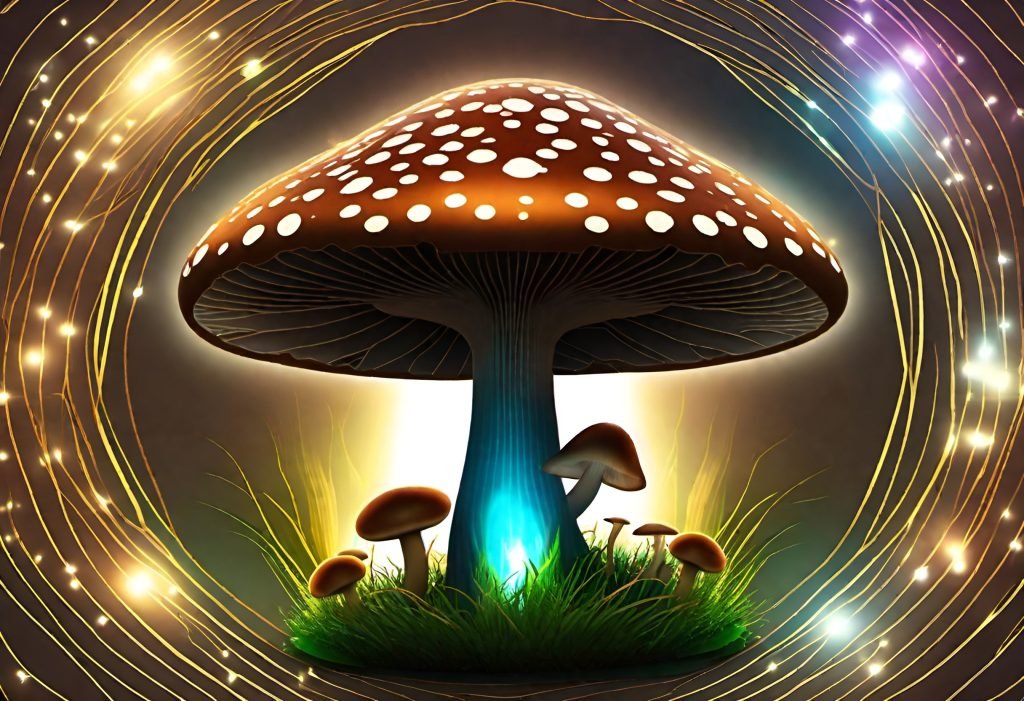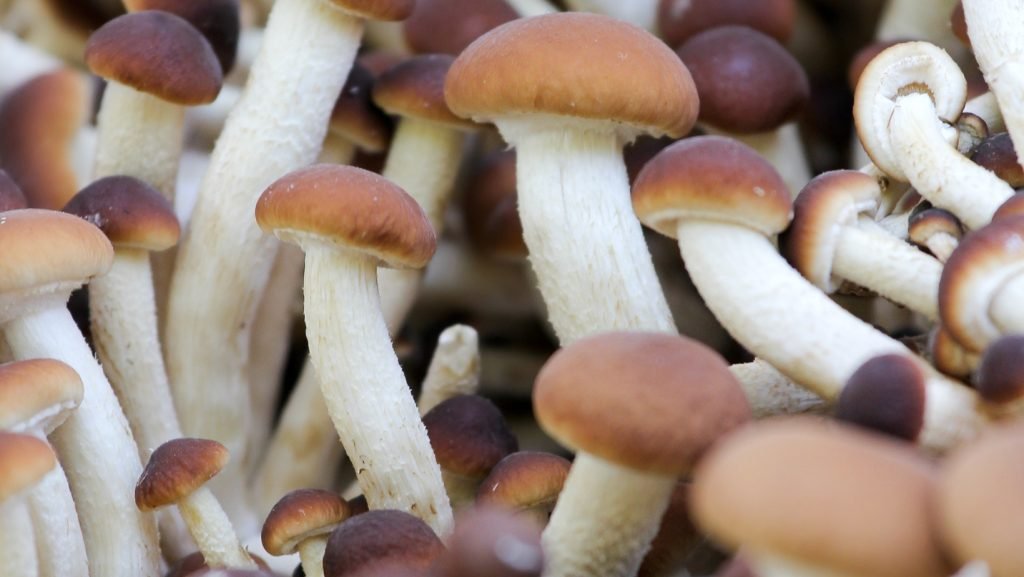Ahoy, Patrons of the 🍄 Mushroom Network! Let's set the spore-print straight:as much as we love a good fungal foray into the depths of mycological mystery, let's get our legal gills in order, shall we? Our endlessly growing treasure trove of articles is designed for your educational enlightenment and mycological research endeavors, not to act as an accomplice in any unlawful underworld expeditions. Ergo (yes, we're using 'ergo'), we explicitly do not endorse, encourage, or in any way glamorize illegal or unsafe activities related to fungi.You, esteemed reader, are solely responsible for adhering to local and international statutes concerning those ever-mysterious psychoactive fungi. And a pro tip: Prior to nibbling on nature's niblets, get the green light from an actual healthcare provider. Our content is strictly not a substitute for professional medical advice. Just to reiterate, for those in the back—we do not advocate personal use of these complex organisms, but we do want to expand your cerebellum with scholarly facts.Any fungi-fueled escapades you engage in based on our content are undertaken at your own legal and personal risk. We disclaim any liability for mishaps, misadventures, or—Heaven forbid—misdemeanors you may find yourself tangled in. So, in the spirit of both safety and legality, please let caution and due diligence be your co-pilots in all your mycological endeavors. After all, we want you free and curious, not 'cuffed and queried. Consider yourselves officially, yet humorously, forewarned. 😄
Greetings, spore-tastic Patrons of the 🍄 Mushroom Network! Today, we’re excavating not soil, but the annals of human history to unearth the groovy tale of entheogenic fungi—psychedelic mushrooms that have been revered, consumed, and, yes, even worshipped by ancient cultures. We’re navigating through Mayan lowlands, Siberian tundras, and the Mesoamerican jungles, all through the lens of a microscope. It’s like “Indiana Jones,” but with more spores and fewer rolling boulders.
In a world teeming with the banal, how did our ancestors find their spiritual ‘aha‘ moments? Quite often, it was by popping a cap. Not of the soda variety, mind you, but of the Psilocybe and Amanita types. These particular fungi have had an unparalleled influence on spirituality, ceremony, and the occasional vision quest.
Across vast continents and timeframes that make carbon dating look like a stopwatch, entheogenic mushrooms have been deeply embedded in the rituals of cultures as varied as the Aztecs, ancient Greeks, and indigenous Siberians. This article aims to be your fun(gi)-fueled Delorean, zipping through the corridors of time and dropping you right in the middle of mushroom magic, ancient edition.
Hold onto your mycology hats, because we’re delving into the incredible world of these revered fungi, exploring their cultural roles, medicinal properties, and even the origins of some modern-day rituals.
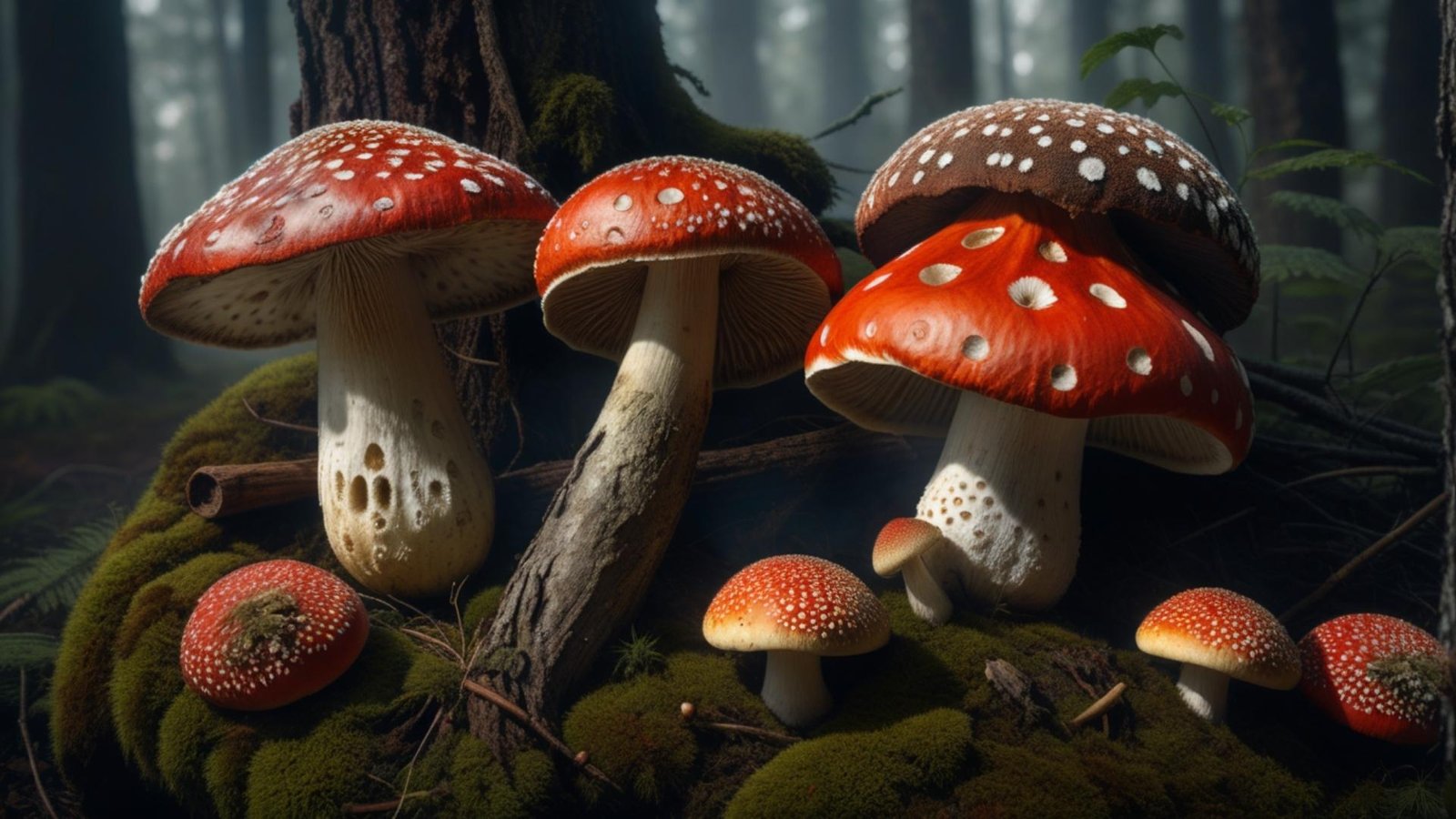
Ancient Mushroom Chronicles: A Shroom Odyssey:
First stop, Mesoamerica, where Psilocybe Cubensis—often referred to as the ‘Golden Teacher‘ for its enlightening effects—reigned supreme. The Aztecs called it “Teonanácatl,” meaning “flesh of the gods.” In fact, these fungi were often reserved for religious ceremonies and rites of passage. Maria Sabina, a Mazatec curandera, used these mushrooms in veladas, nighttime healing ceremonies, believing they allowed communication with the divine. Psilocybe species have even been found depicted in ancient rock paintings, suggesting their revered status.
Jumping to ancient Greece, we find the Eleusinian Mysteries, sacred rituals incorporating an enigmatic substance called ‘Kykeon.’ While the exact makeup of this brew is still debated, many scholars believe it contained a form of ergot fungus, a relative to our psychedelic heroes. Plato and Aristotle were supposedly initiates—perhaps these visionary experiences inspired some of their philosophical musings?
In Siberia, Amanita Muscaria—better known as Fly Agaric—was traditionally consumed by shamans to enter trances and communicate with the spirit world. The iconic red-capped, white-spotted mushroom likely inspired the fairy-tale images we associate with magic mushrooms today. Some theories even suggest the Christmas tradition of Santa Claus has roots in indigenous Siberian shamanic rituals involving Amanita Muscaria.

Fungal Pharmacopeia: Psilocybe vs. Amanita:
While both Psilocybe cubensis and Amanita Muscaria have entheogenic properties, they differ chemically and experientially. Psilocybin, the active compound in Psilocybe, interacts with serotonin receptors, leading to altered consciousness and perception. Amanita’s active compounds, muscimol and ibotenic acid, affect the GABA receptors, creating a different kind of trip, often described as hypnotic or dream-like.
Both have been studied for medicinal applications. Psilocybin has shown promise in treating depression, PTSD, and even cluster headaches, while muscimol has potential anxiolytic and anti-inflammatory properties. However, dosage and preparation are crucial; Amanita muscaria can be toxic in high amounts, a testament to the skill of the ancient shamans who utilized it.
Gordon Wasson, a mycologist and ethnobotanist, was one of the first Westerners to participate in a traditional Mexican mushroom ceremony. His subsequent writings helped to spark the ’60s counterculture’s interest in psychedelics, linking the ancient and modern eras of mushroom reverence.
The universe of mushrooms is expansive, each variant bearing its own unique charm and characteristics. The Marketplace on the 🍄 Mushroom Network is a testament to this diversity. It is a haven for those seeking a deeper understanding of the magical world of mushrooms. If you’re keen on learning more about this type of mushroom and other mushroom variants, this Marketplace is your ultimate resource.
No posts found!
Woah there, eager beaver! 🦫 The 🍄 Mushroom Network’s Marketplace is a smorgasbord of mycological marvels, but it’s VIP access only! 🔐 Log In or Become a Myco-Patron (Yup, still FREE!) to see what all the fuss is about. Trust us, you’ll want in on these shroomy shenanigans! 🍄🎉

Sacred Mycology: Rituals, Rites, and Entheogens:
The entheogenic use of mushrooms often came with an intricate set of rituals and guidelines. Preparation involved not just the physical—harvesting, drying, and brewing—but also the metaphysical: setting intentions, invoking spirits, and adhering to specific lunar or seasonal cycles. Ancient Mayan codices refer to the ceremonial use of Psilocybe, tying them to rain and fertility gods. Maria Sabina’s veladas also involved complex chants and invocations.
In the realm of mythology, Fly Agaric appears in the Hindu Rigveda, thought to be one of the oldest sacred texts. Described as Soma, it was considered the “food of the gods.” The Vikings, too, are believed to have consumed Amanita Muscaria to enter their infamous berserker rages during battle.
Not sure where to start? The 🍄 Mushroom Academy offers a wide range of courses tailored to your needs. Whether you’re a beginner eager to learn or an experienced mycologist looking to broaden your knowledge, the 🍄 Academy has something for everyone.
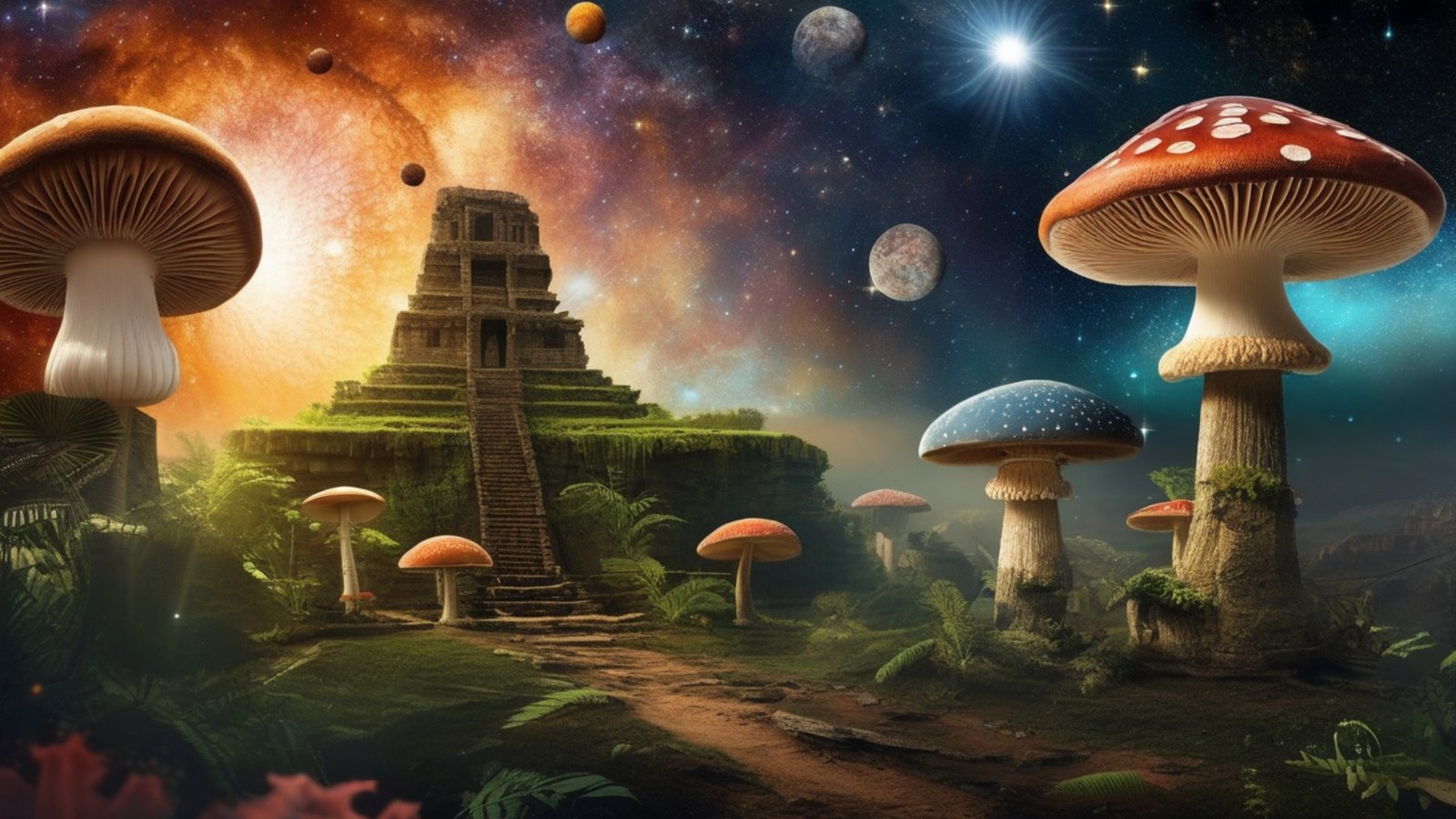
The Eternal Mycelial Thread:
The tapestry of human history is woven with the threads of entheogenic fungi. Far from being the taboo or counterculture elements they are often considered today, these mushrooms were central to the spirituality and medicinal practices of numerous ancient civilizations. We may think we’re cutting-edge with our microdosing and mushroom coffees, but really, we’re just following in the well-trodden spore prints of our ancestors.
The journey of entheogenic mushrooms serves as a poignant reminder that the natural world has always been our greatest teacher, pharmacist, and, occasionally, our most vivid dream-weaver. As the study of these mystical fungi continues to expand, one can only wonder what other ancient secrets are yet to be unearthed—or should we say, un-spored.
So, next time you find yourself foraging for fungi or contemplating a spiritual quest, remember: you’re not just tripping, you’re time-traveling.
Love what you’re reading? Make it FBO (Facebook Official) with us! 🤘🏼 Hit that subscribe button on YouTube, follow our Facebook Page, join our FB Group – Wood Wide Web, and chirp along with us on Twitter/X. While you’re at it, peep into the 🍄 Mushroom Network’s Marketplace—where our Network shelves change faster than a Pink Oyster (Pleurotus Djamor) pins!
Recommended Reads:
Antler Reishi: Understanding Its Genes
The world of mycology is a fascinating and ever-expanding domain, with countless mushroom species captivating...
Read More...Isolating Cultures in Mycology: A Comprehensive Guide
Mushrooms, being fungi, have a complex and fascinating biology that presents many opportunities for scientific...
Read More...Popcorn TEK for Mycology: A Comprehensive Guide
The art of mycology is all about detail, precision, and understanding the nuanced needs of...
Read More...Unveiling the Mysteries of Mushroom Mycelium: A Journey to the Outer Reaches of Space
Mushrooms have long fascinated us with their intriguing forms and culinary delights. But did you...
Read More...Whoa there, Spore Sport! 🍄 Looks like you’re not logged in yet. Don’t you know what you’re missing? MYCO-CREDITS! Imagine all the fungal fun you could have. It’s like finding a Morel in May and not picking it. Tragic, right? Log In or Become a Myco-Patron and start racking up those credits. It’s more rewarding than finding a mushroom in your backyard! 🌟🏡


